An Alpine village on the frontline of climate change
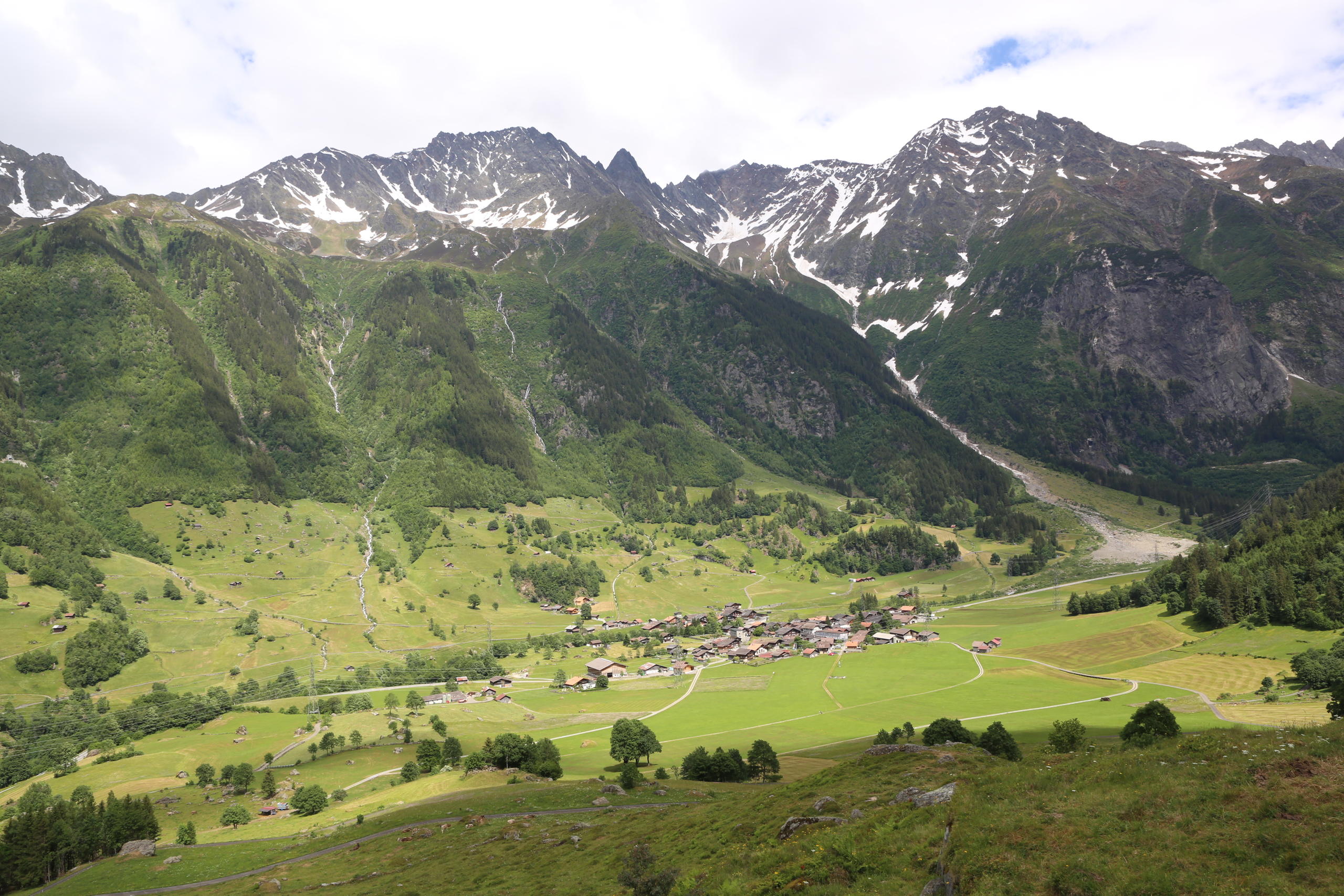
Guttannen is a small and rustic village up in the Swiss Alps that exudes serenity. But this tranquil idyll is threatened by an unstable mountain mass right above it and natural disasters. How can its inhabitants mitigate the dangers of climate change?
Traditional wooden houses with red geraniums in the window boxes, a fountain with fresh water gushing out of it, grazing cows and a river coming right down from the glaciers of the Bernese Alps: GuttannenExternal link, on the road to the Grimsel Pass, is one of those typical Swiss picture-perfect, postcard villages.
“It’s a dream village”, says Jörg Häberle, a geologist with the forestry department of canton Bern. But the dream could change into a nightmare. “The danger comes from up above”, he says, pointing to the 3,000-metre mountaintops that loom over the village.
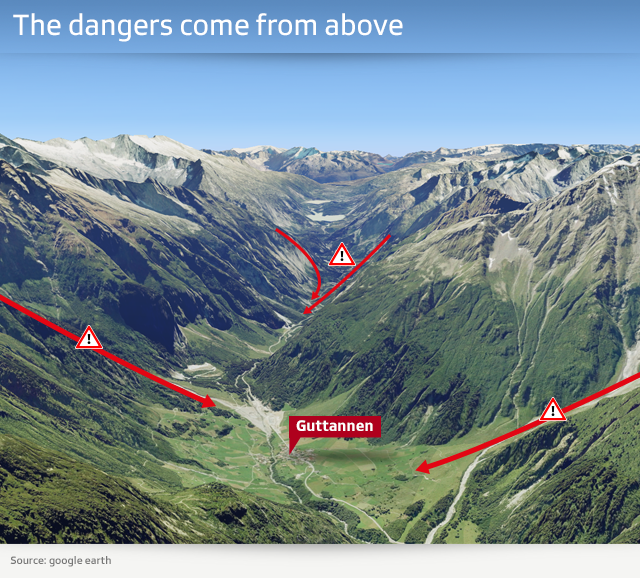
“I’ve never seen anything like it.”
An expert on natural hazards, Häberle recalls all the disasters that have hit the area. In particular, the 1999 avalanche that just stopped at the edge of town, and the debris flow of August 2005. Days and days of heavy rain loosened 500,000 cubic metres of rock, which on the way down covered a highway and landed in the bed of the river, changing its course.
“We were all assuming that the Aare would flow normally. Instead we had the water coming through the village!”, recalls Daniel Burki, a local man who heads the Guttannen association for flood prevention.
The 300 inhabitants of the village were thunderstruck, as Burki recalls: “We’d never seen anything like it! Not even the old people had seen a flood like that.”
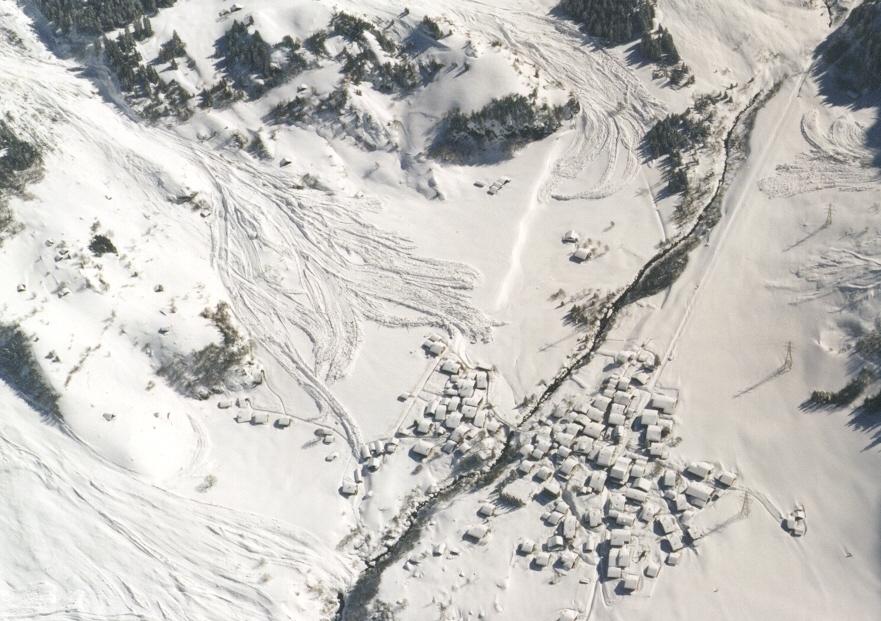
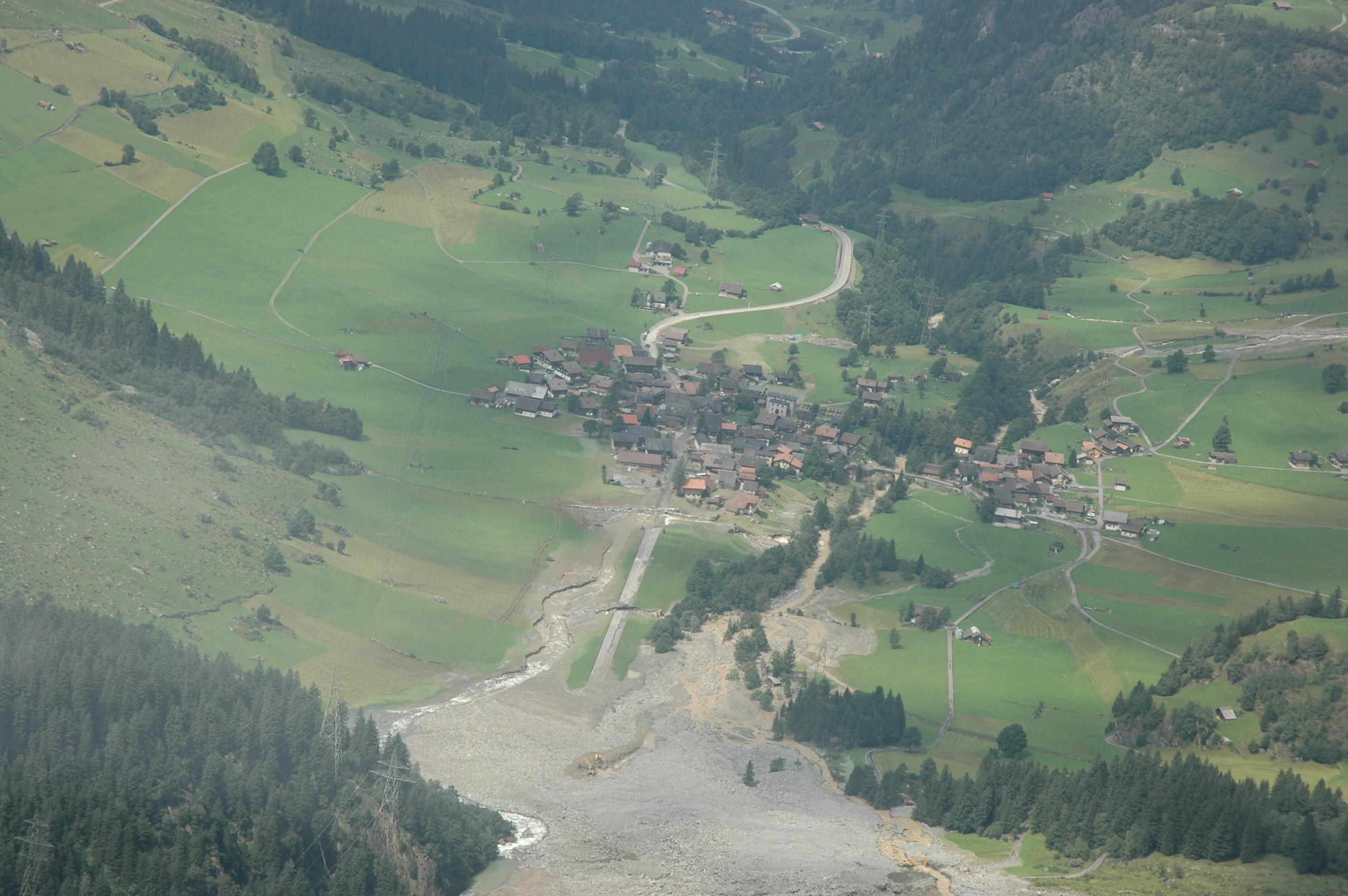
When the mountain lets loose
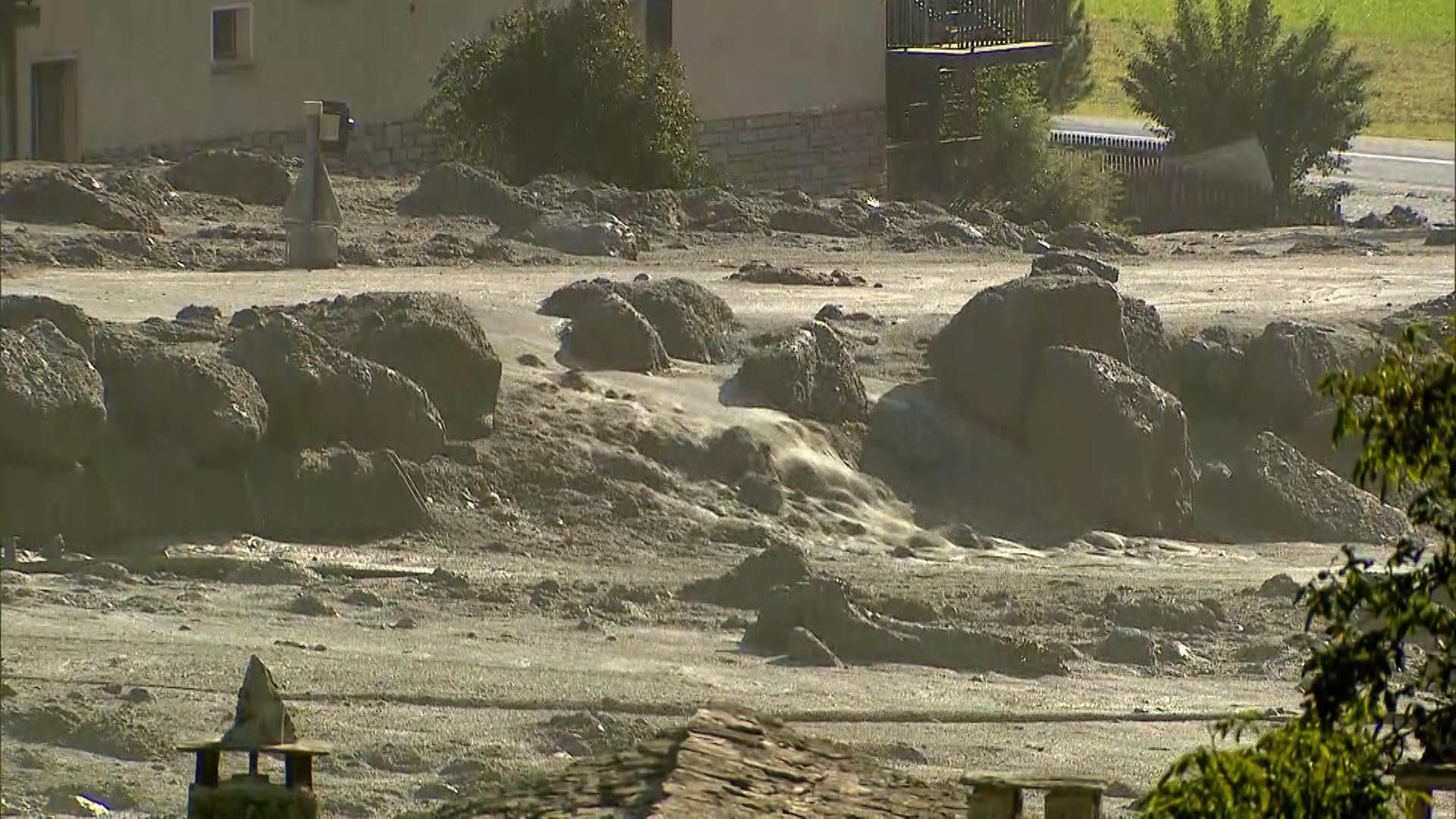
More
Landslide sweeps through Swiss village of Bondo
In this region of the Alps, the main hazard is avalanches. Yet in recent decades, as Häberle points out, no increase has been seen in the risk of avalanches due to climate change. It’s a different situation in summertime, where there are more and more unusual weather events.
Landslides, debris flows, rockfalls and flooding are recurrent phenomena, and their frequency and scope are likely to increase with global warming. “The permafrostExternal link, the area of permanently frozen ice, is shrinking. The rock gets unstable and can coming tumbling down into the valley”, he explains.
+ The Swiss landscape in 100 years
The problem, Häberle goes on, is that these things are not predictable. “At times there may be heavy rain, but nothing happens. Other times we get landslides quite a while after the actual precipitation.”
A river of stones and debri
An expert on natural hazards, Häberle recalls all the disasters that have hit the area. In particular, the 1999 avalanche that just stopped at the edge of town, and the debris flow of August 2005. Days and days of heavy rain loosened 500,000 cubic metres of rock, which in the way down covered a highway and landed in the bed of the river, changing its course.
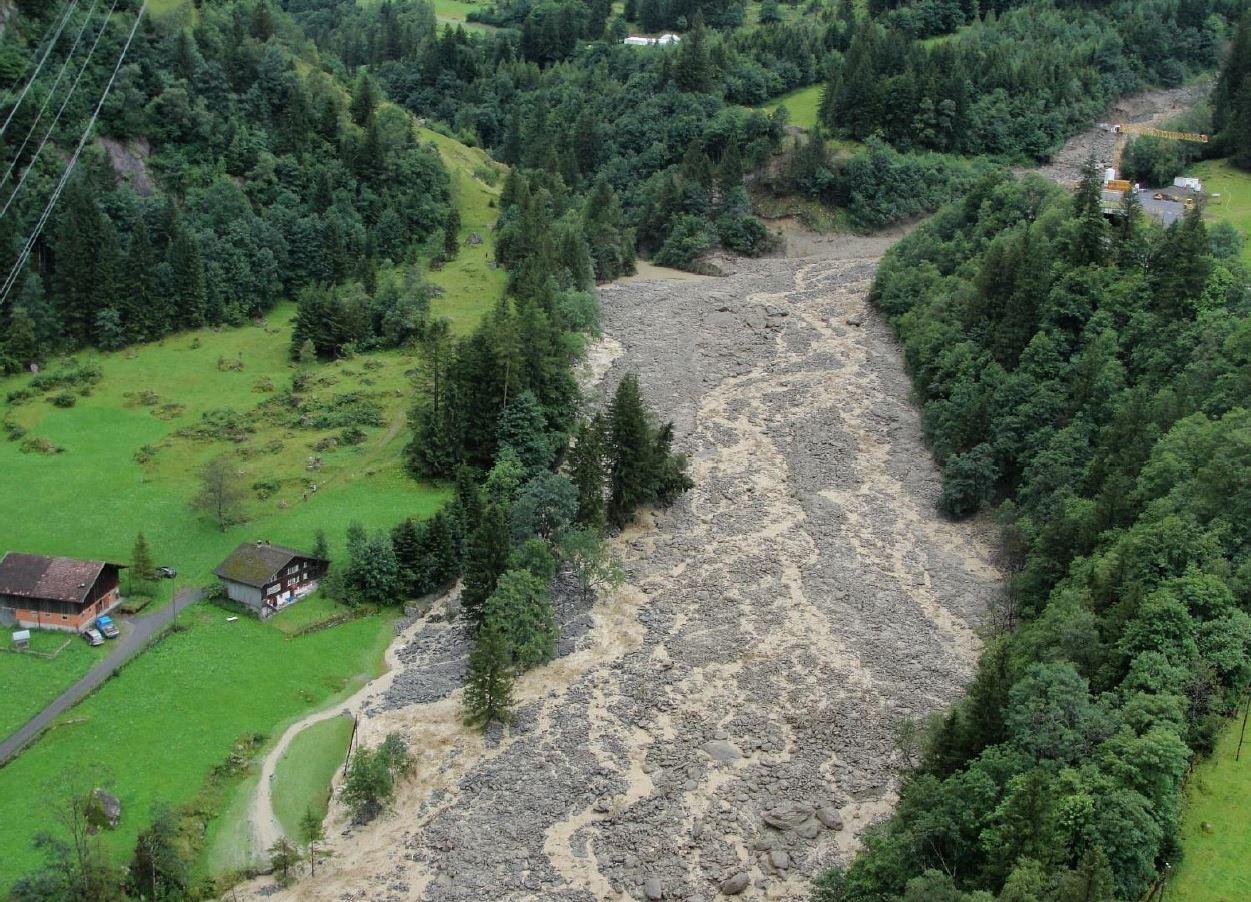
“We were all assuming that the Aare would flow normally. Instead we had the water coming through the village!”, recalls Daniel Burki, a local man who heads the Guttannen association for flood prevention.
The 300 inhabitants of the village were thunderstruck, as Burki recalls: “We’d never seen anything like it! Not even the old people had seen a flood like that.”
But the risk of such an event has set off alarm bells among the community and those responsible for preventing natural disasters. How can they protect themselves? Should they put up a system of barriers – or just leave the area altogether?
Risks and future scenarios
There is no quick answer, clearly. And there doesn’t need to be, points out Häberle. “Dealing with events of that kind, you feel the urge to take action right away. But there needs to be careful thought, not taking decisions that may turn out to be unnecessary, such as moving part of the village or the highway.”
The strategy of Guttannen, which is involved in a pilot project of the federal government on coping with climate change, is to monitor the range of hazards and do risk evaluations, Häberle explains. “We plan out more or less realistic future scenarios. Constant monitoring of the terrain lets us respond to any immediate hazards. Based on these data, we decide what safety measures to implement, such as putting up barriers, or changing the zoning in the locality”.
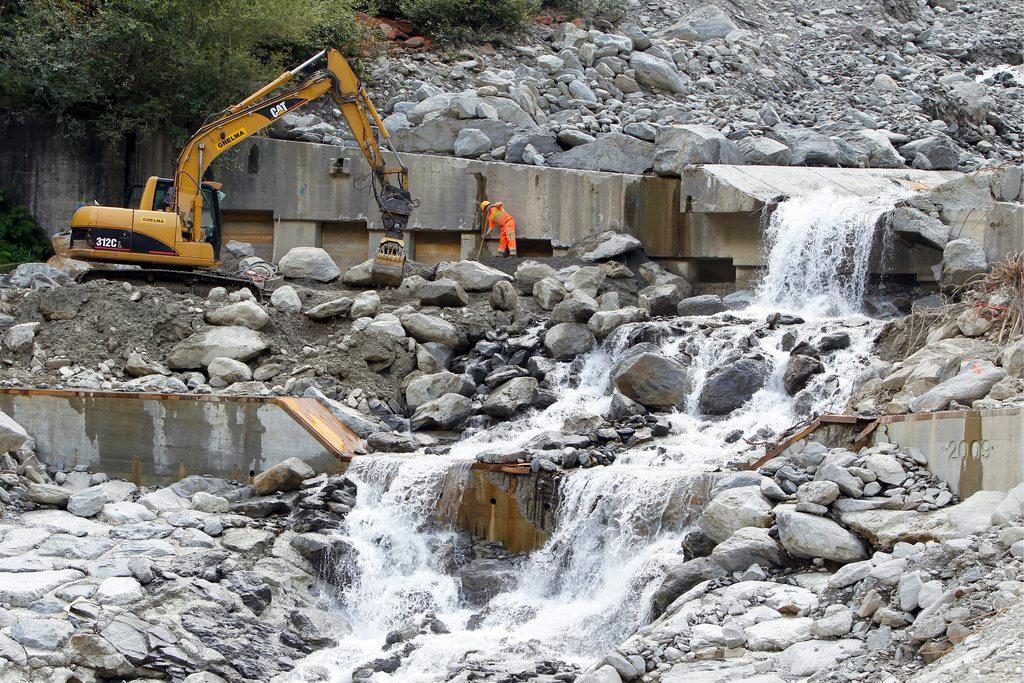
Sigh of relief
Seven years after the last big debris flow on the Spreitgraben, the situation seems to be under control. “We are far away from the scenarios forecast then, and now we can say with some relief that the situation has evened out a bit”, says Häberle. A plan to move some dwellings elsewhere has been shelved.
However, the safety officials are not letting down their guard. The Ritzlihorn up above is just one of 32 potential sites in canton Berne where there is a hazard of a rock fall, according to one study. “We just don’t know what the future has in store. The main thing is to be ready to take action”, says Häberle.
Being able to take action requires an effective early warning system, he explains, as we walk along the mountainside. Arriving at the edge of the big channel carved out by the Spreitgraben torrent, we find that these early warning systems can be really quite simple.
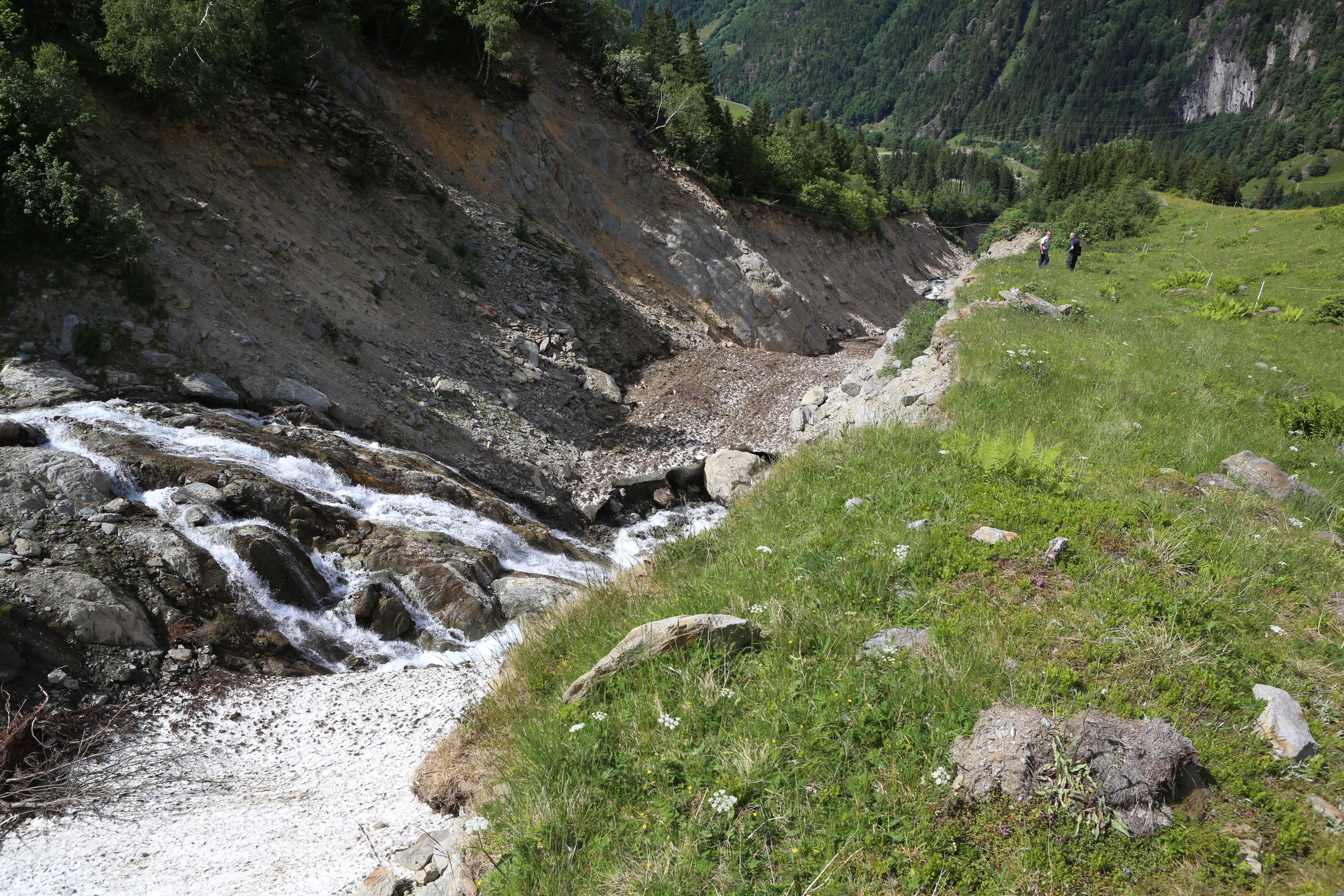
A stone and a camera
Slung from a cable spanning the two sides of the torrent, a rock is hanging a few inches over the surface of the water. If there is detritus coming down or the river gets bigger, the oscillation of the rock activates an initial alarm signal.
Further down the valley, radar and a video camera are in place to confirm or disconfirm the warning. The pictures are sent to Bürki’s mobile phone and to other observers too. “This system is of interest to countries with terrain similar to the mountain regions of Switzerland, like Peru and Nepal”, he tells us.
If the alert is confirmed, the emergency plan goes into operation. Traffic lights on the main road turn red, keeping motorists out of the danger zone. Having an evacuation plan and drills on a regular basis by local firefighters is reassuring for the local inhabitants.
In Switzerland, notes Häberle, local government has the responsibility for protecting life and property. He estimates that the costs of a prevention strategy in a mountain commune (mapping of natural hazards and risk evaluation) lies between CHF 90,000 and 220,000.
To this are added costs of monitoring and a warning system – between CHF 30,000 and 80,000 per year – and any protective measures, which depending on what is required may amount to several hundred thousand francs.
A little bit of luck
For those involved, any strategy to cope with climate change has to take one major consideration into account: “We can’t fight nature. We have to leave it its own space, and we have to adapt”, says Häberle.
Right now in Guttannen people feel safe enough, says Bürki. “We can consider ourselves lucky: we are a small Alpine commune, but we can count on a whole network of people to keep an eye on the village”.

(Translated from German by Terence MacNamee), swissinfo.ch

In compliance with the JTI standards
More: SWI swissinfo.ch certified by the Journalism Trust Initiative

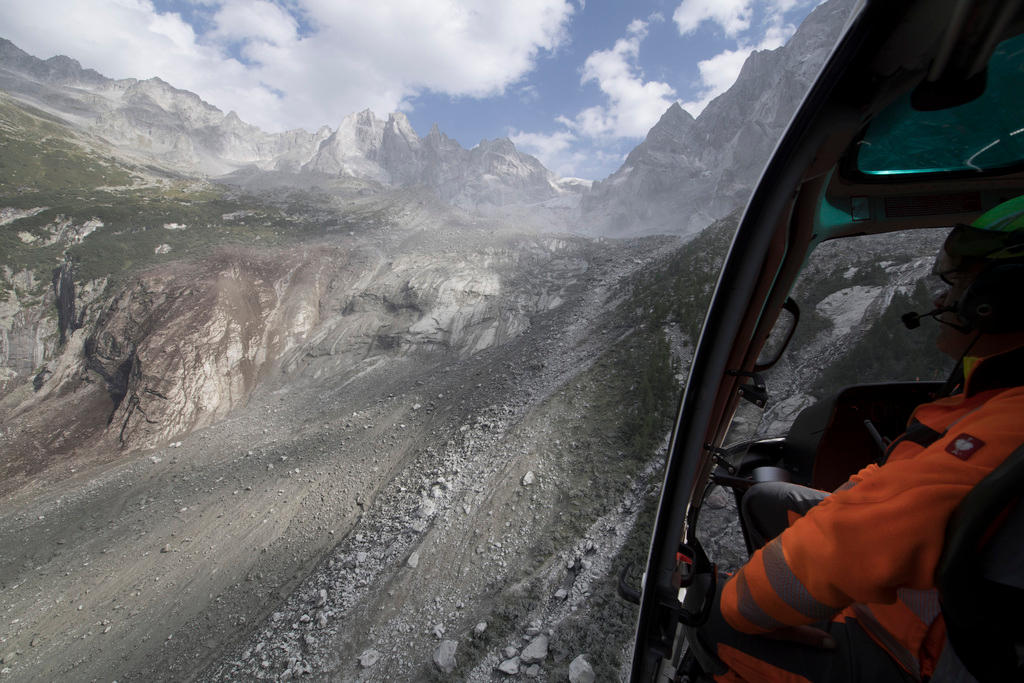
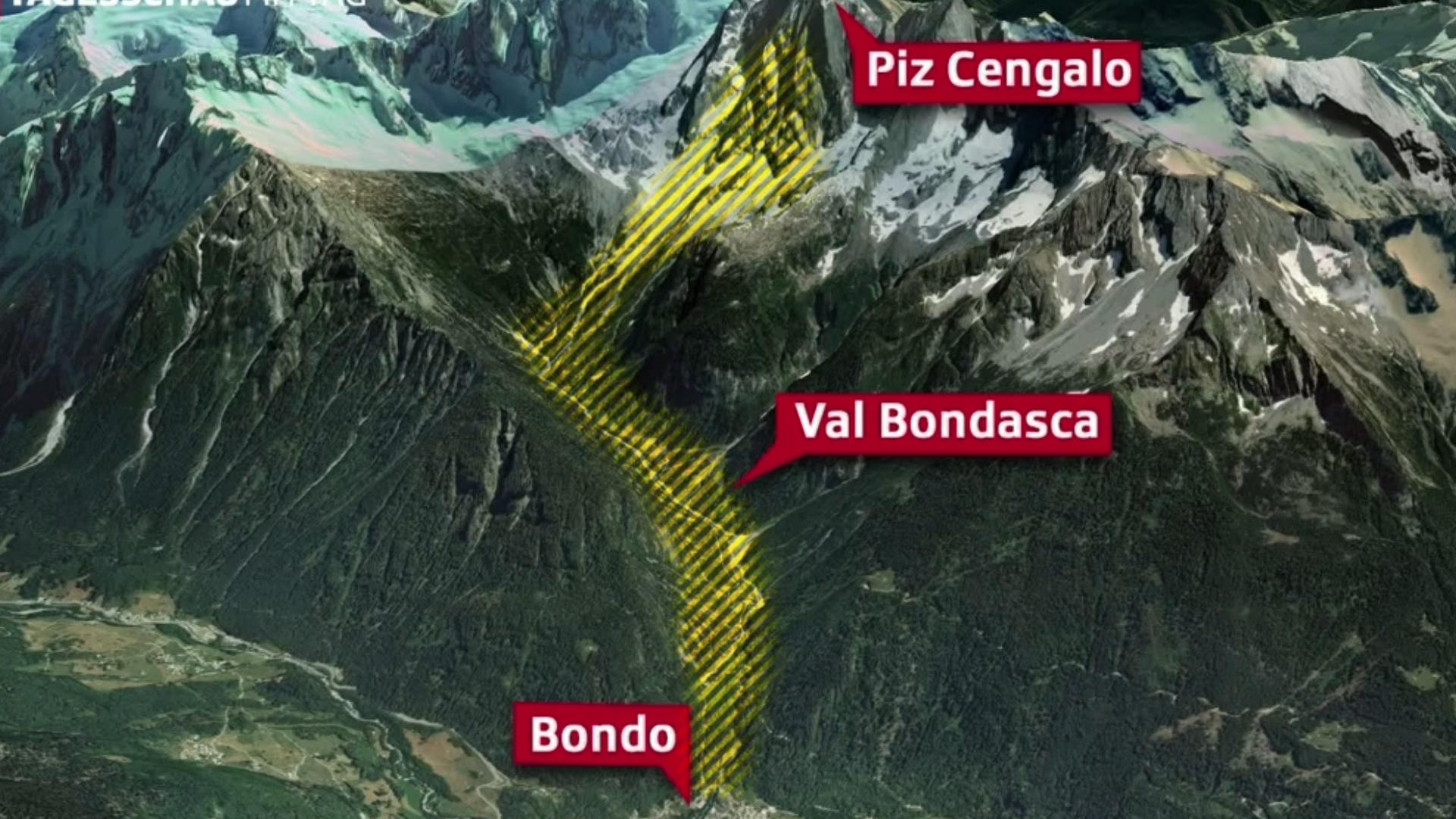
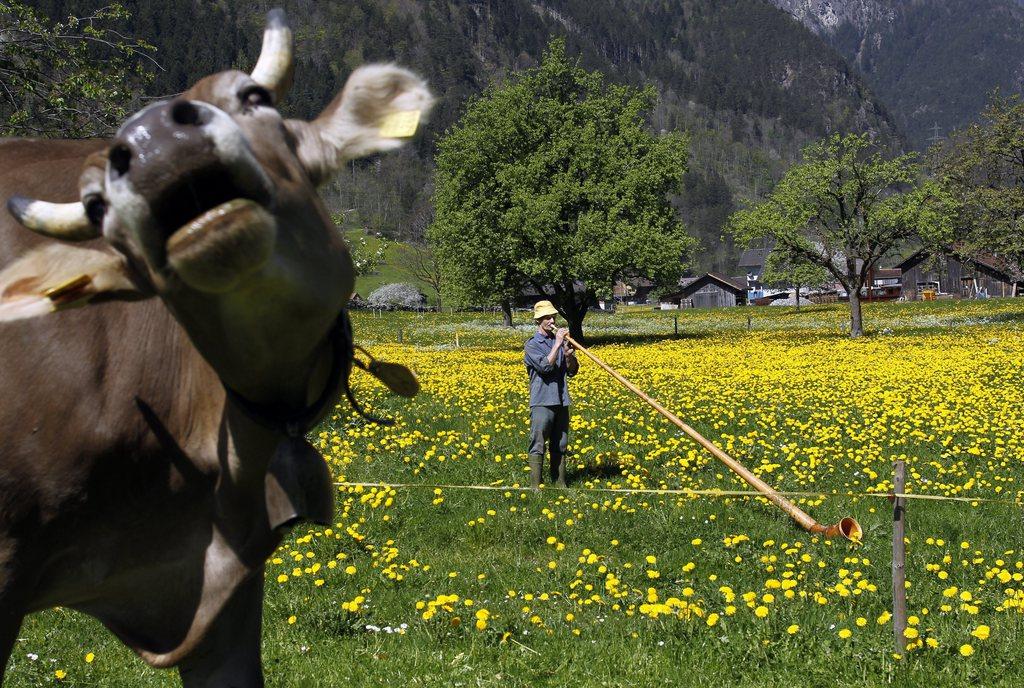
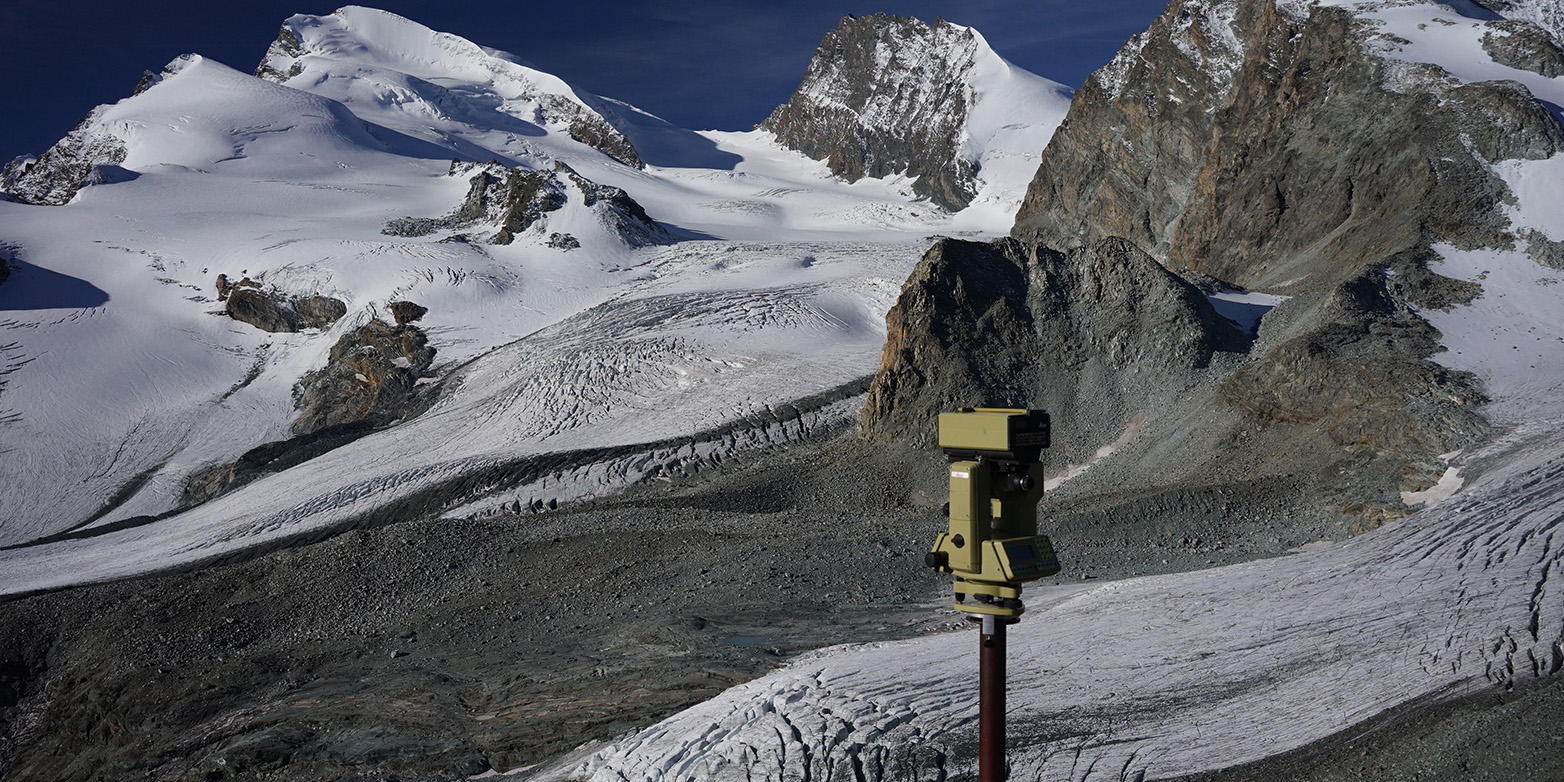
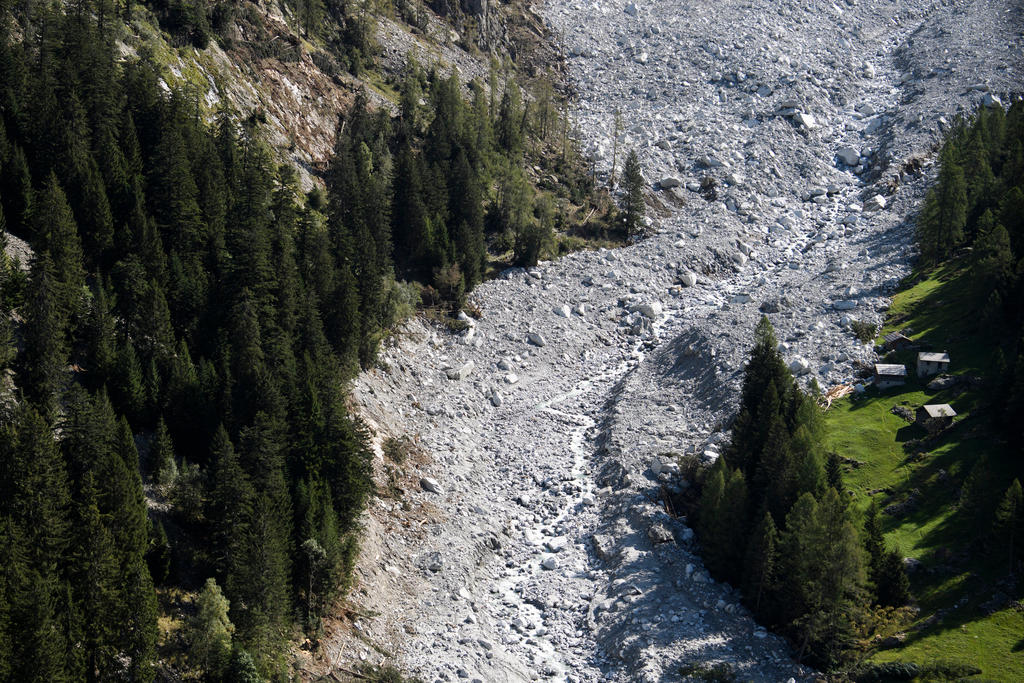
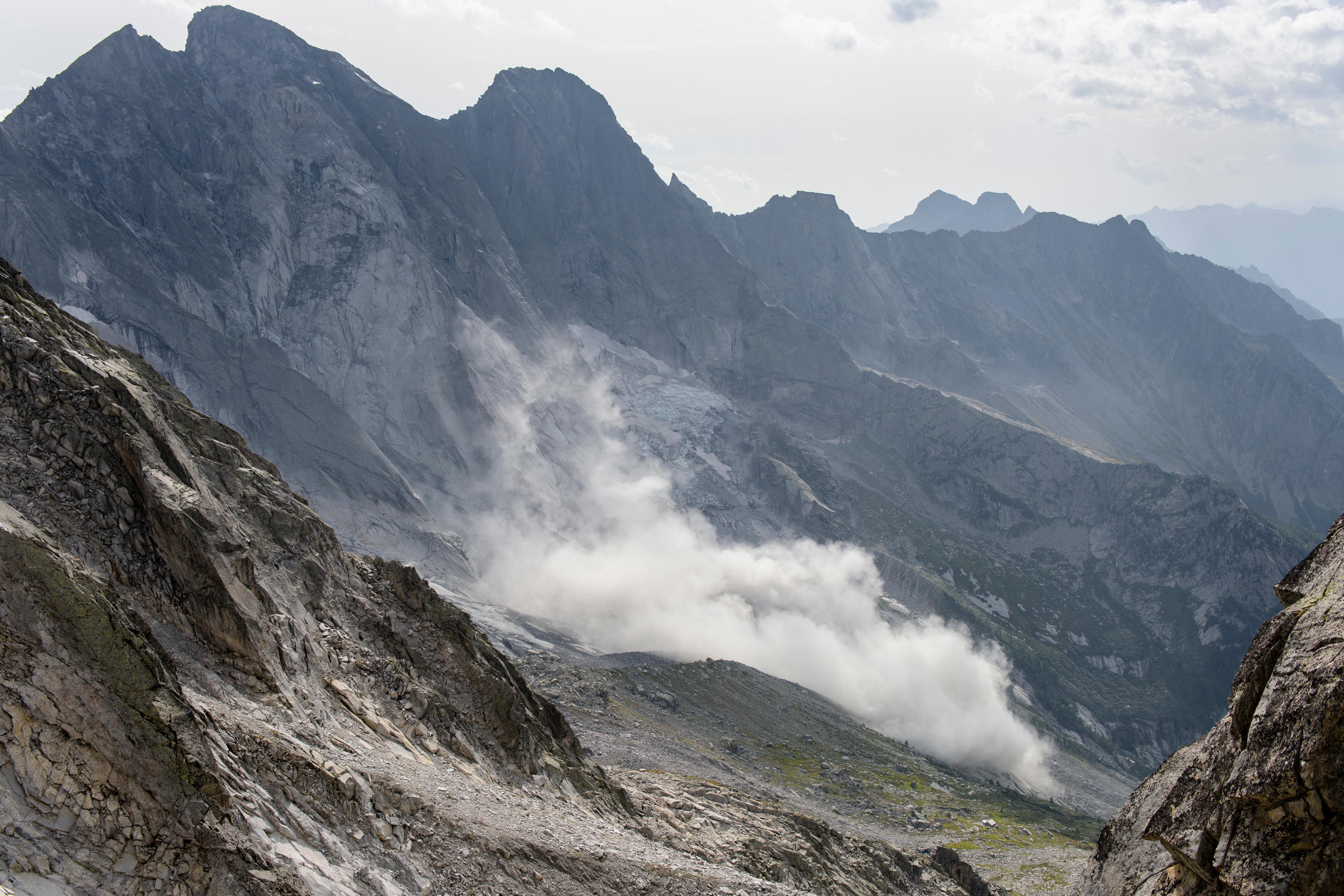
You can find an overview of ongoing debates with our journalists here. Please join us!
If you want to start a conversation about a topic raised in this article or want to report factual errors, email us at english@swissinfo.ch.